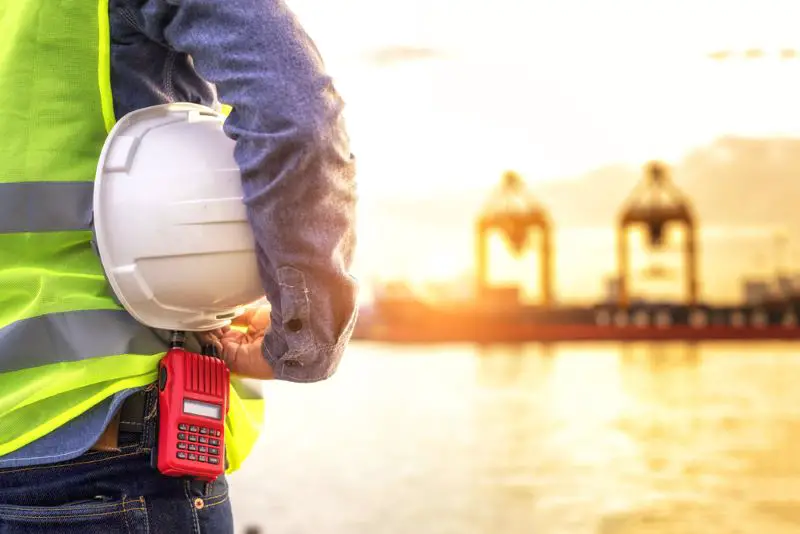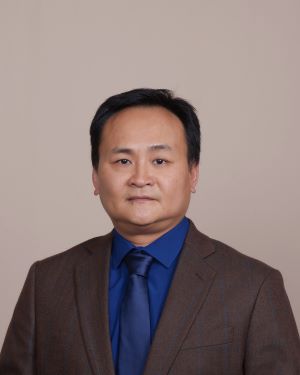Click here to get this post in PDF
Image source: Depositphotos.com
Marine engineering is a discipline that combines various engineering fields to design and construct maritime vessels and structures.
In this demanding and intricate field, Sian Yang Tan stands out as a leading expert, known for his remarkable contributions to the design and construction of unbreakable offshore structures and ship builds.
His work is characterized by a profound understanding of engineering principles, a commitment to innovation, and an unwavering dedication to safety and sustainability.
“The ocean is an unforgiving place, and engineering structures that can endure its wrath requires both scientific knowledge and creative problem-solving.
“I get immense satisfaction from seeing large projects come to life and float on the water; it is a major motivator for me,” says Tan.
“I also really enjoy working with a team of passionate individuals to create something functional and innovative, which is a very crucial part of ship and offshore design.
“And I also love building massive projects and watching heavy structures come together and float. It’s wonderful to see steel, machinery, piping, and electrical systems all working together to create something that really works.”
“Today, with sustainability top of mind for many projects, now we are working with what cannot always be sustainable materials, but we are trying to make them as environmentally friendly as possible. Having a cohesive team who are all appreciative to each other and the ideals you are following is essential.”
Tan’s journey into marine engineering was inspired by his father: “He was a mechanic. He didn’t study formally but could dismantle and repair trucks,” he recalls.
“I wanted to be a mechanic but ended up in electrical engineering due to financial constraints. At the time, Singapore was booming, and they needed engineering talent, so I went into marine engineering, sponsored to complete my degree in the UK.
He had already invested in a solid educational foundation; Yang Tan holds a Master of Science in Business Analytics and an MBA, both from Hult International Business School and a Bachelor in Naval Architecture and Offshore Engineering (Honors) from Strathclyde University.
He is also pursuing a Ph.D. in Computer Science and Engineering at the University of Fairfax, with an expected graduation in 2028.
After completing his education, Yang Tan quickly established himself in the marine engineering industry.
His career began at Keppel Fels Pte Ltd, where he started as a management trainee and progressed to Construction Manager. Yang Tan managed large-scale unconventional projects, forecasted potential delays, and proposed alternate solutions. He oversaw steelwork construction activities and resolved significant challenges, maintaining high workforce efficiency and achieving project goals within budget and on schedule.
“Designing for deep water is like solving a complex puzzle,” Tan explains. “You have to consider every possible scenario and ensure that your structure can handle it.”
He adds: “I’ve made ships up to 200 meters. I’ve stayed offshore in Norway for months testing rigs and ships, but I’m not a sailor. I can’t stay on a vessel for more than three months without going crazy.
“I love the engineering part, putting everything together, and seeing the design come to life. The planning stage is also crucial—designing the vessel layout to maintain stability and functionality. Lastly, I enjoy the monitoring and controlling phase, working closely with production to ensure everything runs smoothly.
Tan’s expertise is wider than traditional engineering practices. He is known for pushing the boundaries of marine engineering through innovation: “I love building mega projects and seeing heavy structures come together and float. It’s amazing to see steel, machinery, piping, and electrical systems all working together to create something functional.
“I once worked on a project where we cut a vessel in half to extend it by 50 meters. We floated the sections apart and inserted a new section in the middle without using cranes, relying on the water for support.
“Another project involved heavy block lifting, where we used a special method to cantilever the structure into place.”
Another of his significant contributions is the use of advanced materials in offshore structures. Tan was instrumental in incorporating high-strength composites and corrosion-resistant alloys, significantly enhancing marine structures’ durability and lifespan.
During his work in CIMC raffles, he pioneered using an extra-high-tensile plate of DH690 on semi-submersible critical hot spot areas to meet the fatigue design.
“Innovation is key to advancing marine engineering,” Tan states. “By using advanced materials and technologies, we can create structures that are not only stronger but also more sustainable.”
His work has led to the development of offshore structures that require less maintenance and have a lower environmental impact, aligning with the global push towards sustainable engineering practices.
Tan does this by using extra-high-tensile steel. It boosts the industry’s research into using ultra-high-tensile steel or other equivalent material substances to expand offshore rig design life spans with less maintenance and environmental sustainability.
Safety is also of paramount concern in marine engineering, and Tan has made it a cornerstone of his work. He has developed and implemented rigorous safety protocols that ensure the integrity of offshore structures even in the most adverse conditions: “Safety is non-negotiable,” Tan asserts.
“Every decision we make in the design and construction process is guided by the need to protect human lives and the environment.”
Tan’s commitment to safety is evident in his approach to risk management. He employs advanced simulation tools to model potential failure scenarios and designs structures that can withstand these conditions.
He recalls: “I developed two shipyards, one in Zhuhai and the other near Shanghai. The first was an anchor-handling supply vessel shipyard, about 200,000 square meters. I started from land acquisition, designing the layout, planning the steel plate workflow, and overseeing the shipyard’s operation. The total investment was about $44 million, and I heard they sold it for a profit of $150 million after I left. Safety was always paramount in the process.
“The second shipyard, in Zhoushan Island near Shanghai, was bigger, about 1 million square meters, with two dry docks. It was initially designed for building jack-up rigs and semisubmersibles, but we switched to repair work. I spent almost five years developing these two shipyards. I personally made sure that every ship which left the yard was repaired with no compromises when it came to safety.”
This proactive approach has significantly reduced the incidence of structural failures and accidents in the projects he has overseen.
Tan is also a strong advocate for sustainability in marine engineering. He recognizes the environmental impact of ships and offshore structures. He has dedicated himself to developing solutions that minimize this impact: “I want to implement modular construction in shipbuilding, where each block is fully outfitted before assembly. This would streamline the process, reduce errors, and improve efficiency.”
Tan is also looking at integrating renewable energy sources into offshore platforms.
“Renewable energy is the future of marine engineering,” Tan believes. “By harnessing the power of wind and waves, we can create sustainable offshore structures that contribute to a cleaner environment.”
Including wind turbines and wave energy converters on offshore platforms provides a dual benefit of energy generation and reduced environmental footprint.
Throughout his career, Tan has emphasized the importance of collaboration in achieving engineering excellence.
He works closely with a diverse team of engineers, scientists, and environmentalists to ensure that every aspect of a project is meticulously planned and executed; “Clients are often frustrated when problems highlighted early on are addressed when they become significant issues.
“There’s also the challenge of ensuring the engineering team understands and meets client requirements, especially with complex electrical and instrumentation aspects. Collaboration is the backbone of successful engineering projects,” Yang Tan notes.
“By bringing together experts from different fields, we can create innovative solutions that address complex challenges.”
To this end, he has also mentored many project managers and engineers: “They have gone on to hold significant positions in the industry,” Yang Tan states: “I enjoy sharing my passion and knowledge to help others succeed.”
Tan has been awarded accolades from the Ngee Polytechnic in Singapore as part of the Association of Singapore Marine Industries prize for outstanding performance in the Ship and Marine Technology Advanced Diploma Course. He was also lauded as an exceptional graduate when he was on the course which the Department of Shipbuilding and Offshore Engineering runs.
Diwakar Karri is Assistant Vice President at SEATRIUM AmFELS. They have collaborated on the 15,000CY hopper dredge barge project, where Tan has worked as the Project Manager.
He says: “His in-depth knowledge of marine engineering and strategic approach to project management are immediately apparent, showcasing his capability to handle complex tasks on any project easily.
“Sian Yang also has diligence and attention to detail that has ensured that every aspect of this project has been meticulously managed. His supportive nature fosters a collaborative environment, which is crucial for successfully completing large-scale projects.”
Karri adds: “Sian’s project management expertise and technical proficiency in marine engineering and the work we are doing is truly outstanding. His ability to foresee potential issues and implement effective solutions has been instrumental in keeping the hopper dredge barge project on track and within budget.
“During the project, we encountered significant logistical challenges that required immediate and effective solutions. Sian’s strategic planning and problem-solving skills were crucial in overcoming these obstacles, ensuring the project’s success without compromising on quality or timelines.”
Tan is now focused on pushing the boundaries of marine engineering: “By investing in the future of engineering, we can ensure that our industry continues to innovate and thrive.”
He is also dedicated to moving forward with his modular shipbuilding ideology, which will revolutionize the industry: “We need to understand each other’s goals and work together to achieve the best results. I genuinely believe that we can change the world with offshore structures, which will open up many opportunities for us as human beings.
“I aim to implement modular construction in shipbuilding to improve efficiency and reduce errors. I envision creating interactive 3D models to streamline design and construction processes.”
Tan’s expertise in marine engineering is a testament to his dedication, innovation, and commitment to safety and sustainability. His work in crafting unbreakable offshore structures has set new standards in the industry, demonstrating the importance of combining technical knowledge with creative problem-solving.
“Engineering excellence is about more than just building strong structures. It’s about creating solutions that are safe, sustainable, and innovative. That’s the legacy I strive to leave in marine engineering.”
You may also like:
Unleashing Innovation and Precision: The World of Mechanical Engineering


